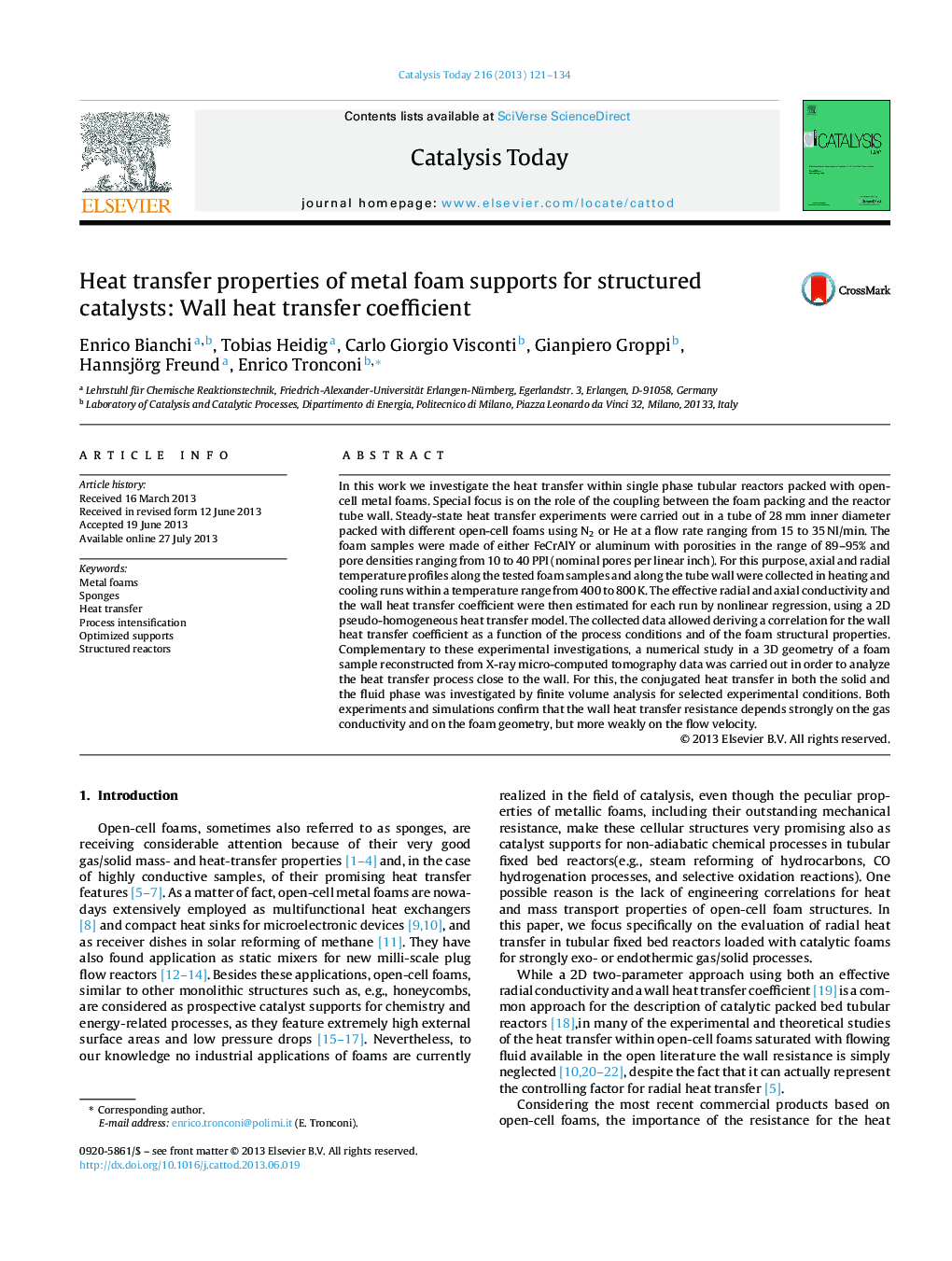| کد مقاله | کد نشریه | سال انتشار | مقاله انگلیسی | نسخه تمام متن |
|---|---|---|---|---|
| 54587 | 47016 | 2013 | 14 صفحه PDF | دانلود رایگان |

• Heat transfer data were collected for metal foams with He and N2 flow.
• The enhancement of the fluid conductivity has a strong impact on the wall heat transfer coefficient.
• The wall heat transfer coefficient exhibits a weak dependence on flow velocity.
• A correlation for the wall heat transfer coefficient in metal foams is proposed.
In this work we investigate the heat transfer within single phase tubular reactors packed with open-cell metal foams. Special focus is on the role of the coupling between the foam packing and the reactor tube wall. Steady-state heat transfer experiments were carried out in a tube of 28 mm inner diameter packed with different open-cell foams using N2 or He at a flow rate ranging from 15 to 35 Nl/min. The foam samples were made of either FeCrAlY or aluminum with porosities in the range of 89–95% and pore densities ranging from 10 to 40 PPI (nominal pores per linear inch). For this purpose, axial and radial temperature profiles along the tested foam samples and along the tube wall were collected in heating and cooling runs within a temperature range from 400 to 800 K. The effective radial and axial conductivity and the wall heat transfer coefficient were then estimated for each run by nonlinear regression, using a 2D pseudo-homogeneous heat transfer model. The collected data allowed deriving a correlation for the wall heat transfer coefficient as a function of the process conditions and of the foam structural properties. Complementary to these experimental investigations, a numerical study in a 3D geometry of a foam sample reconstructed from X-ray micro-computed tomography data was carried out in order to analyze the heat transfer process close to the wall. For this, the conjugated heat transfer in both the solid and the fluid phase was investigated by finite volume analysis for selected experimental conditions. Both experiments and simulations confirm that the wall heat transfer resistance depends strongly on the gas conductivity and on the foam geometry, but more weakly on the flow velocity.
Figure optionsDownload high-quality image (483 K)Download as PowerPoint slide
Journal: Catalysis Today - Volume 216, 1 November 2013, Pages 121–134